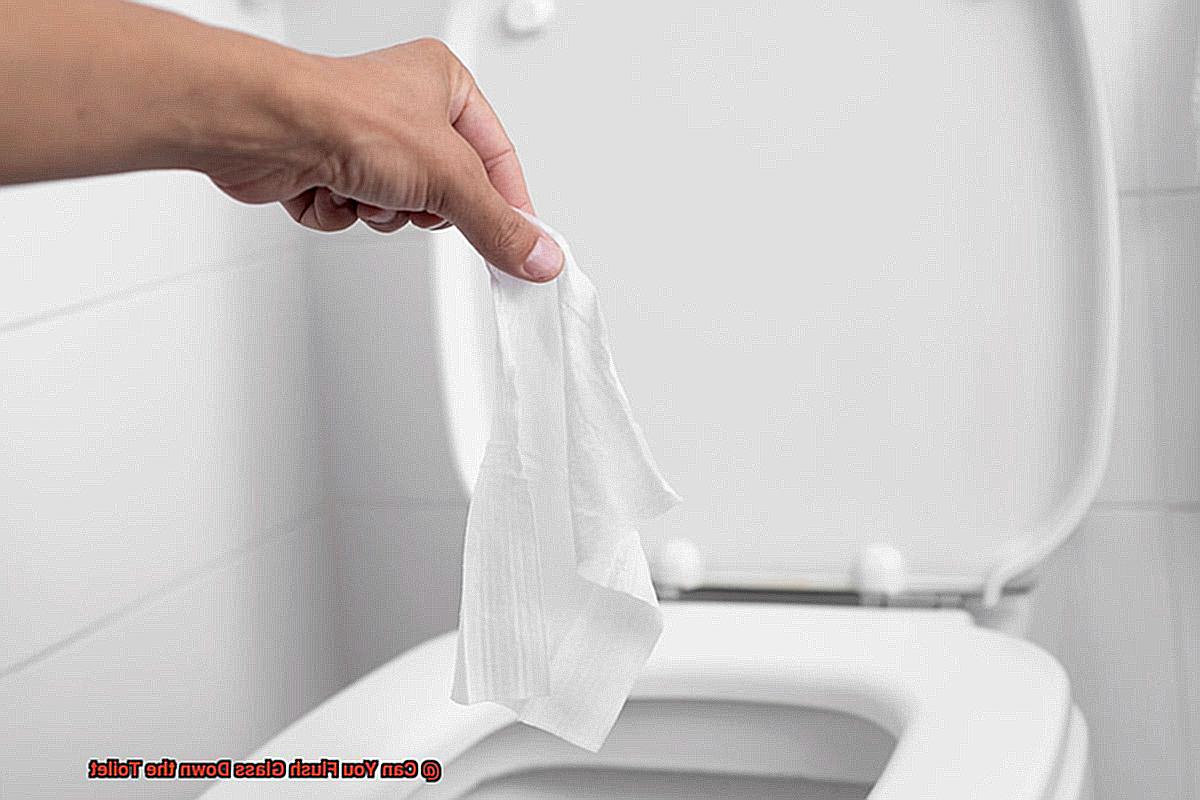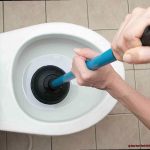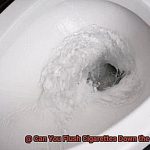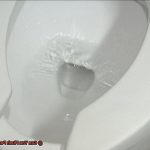Have you ever shattered a glass while using the bathroom and wondered if you could just flush it down the toilet? It’s a question that may seem logical at first, but the consequences of doing so can be both costly and dangerous.
Although glass is a solid material, it can easily break down into smaller shards when exposed to pressure or heat. This means that flushing glass down the toilet can lead to blockages and even damage your pipes. Not only is this inconvenient, but it can also result in expensive repairs.
But it doesn’t stop there. Flushing glass down the toilet can also harm our environment. Glass takes years to biodegrade, which means it can linger in our water supply for quite some time. This puts aquatic life at risk and has long-term effects on our ecosystem.
So what should you do with broken glass instead? In this blog post, we’ll explore safe and effective ways to dispose of broken glass without causing any harm to yourself or others. From using protective gear to properly labeling disposal containers, we’ve got you covered.
Don’t let convenience outweigh responsibility – join us as we delve into why flushing glass down the toilet is never a good idea and how you can make a difference by disposing of broken glass responsibly.
Contents
What Happens When You Flush Glass Down the Toilet?
The consequences of this action can be catastrophic and lead to costly repairs. So, what exactly happens when you flush glass down the toilet? Let’s dive in.
Firstly, it’s important to note that glass is not designed to be disposed of in this way. It’s not biodegradable, which means that it won’t dissolve in water or break apart easily. As a result, it can quickly get stuck in the pipes, leading to blockages and clogs. These blockages can cause your toilet to overflow, leaving you with a messy and expensive situation on your hands.
But wait, there’s more. Even if the glass manages to pass through the pipes without causing a clog, it can still cause damage to your septic system or sewer lines. Small pieces of glass can accumulate in your septic tank and prevent it from functioning correctly. This can lead to costly repairs or even the need for a new system altogether.
And if that’s not bad enough, when glass makes its way into the sewer system, it can inflict serious damage on the infrastructure itself. The sharp edges of glass can scratch and damage the interior of pipes, leading to leaks and other problems. This can be especially problematic if the sewer line is shared with other properties, as it can cause problems for everyone on the line.
Don’t flush glass down the toilet. If you happen to have broken glass in your bathroom, dispose of it correctly by placing it in a sealed container and throwing it away in the trash. Trust me; it’s much easier than dealing with a plumbing disaster down the line.
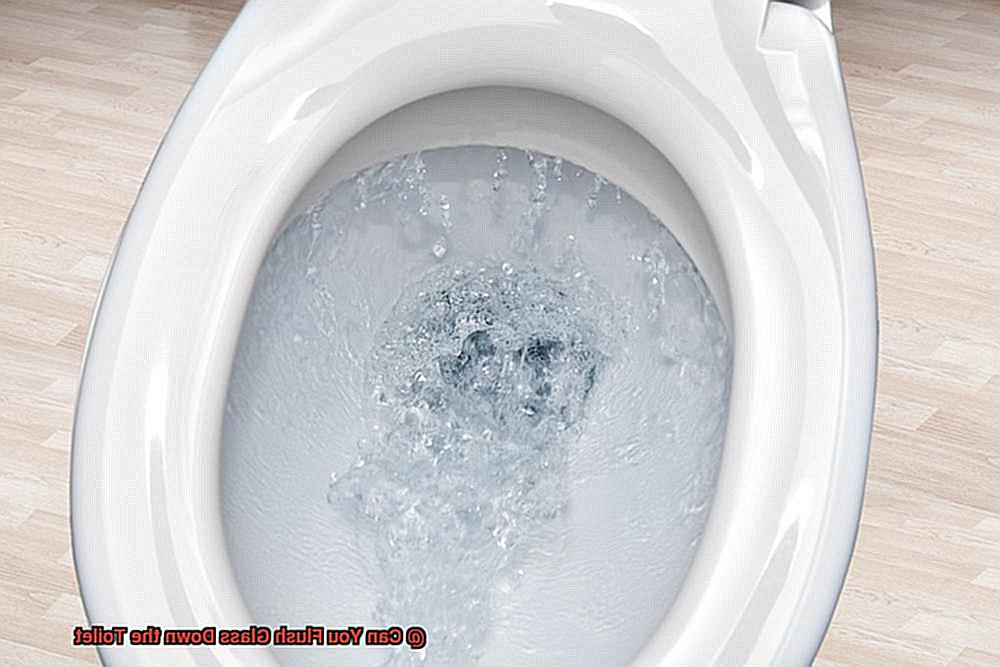
The Damage Caused By Flushing Glass Down the Toilet
While it may seem like a convenient solution for disposing of broken glass, it can actually cause significant damage to your plumbing system, harm the environment, and pose a safety hazard.
Here’s why: glass is not biodegradable, and it doesn’t break down like other materials such as paper or organic matter. When flushed down the toilet, it can easily become lodged in your pipes, causing blockages that lead to clogs and backups in your plumbing system. This can be an expensive problem to fix, often requiring the help of professional plumbers to remove the glass and repair any damage caused by the blockage. In fact, in some cases, flushing glass can even cause damage to your sewer lines or septic tank, resulting in costly repairs.
Flushing glass down the toilet can also have a negative impact on the environment. If the glass makes it through your pipes and into the sewage treatment plant, it can damage the machinery used to treat wastewater. Additionally, broken glass particles can contaminate water supplies and harm aquatic life if they make their way into rivers or oceans.
On top of all these issues, flushing glass down the toilet is also a safety hazard. Broken glass can cause injury to anyone who comes into contact with it — including plumbers who are called in to fix the problem.
So what should you do instead? Always use proper disposal methods for glass products, such as recycling or placing them in designated trash bins.
By taking these simple steps, you can help protect your plumbing system, the environment, and yourself from potential harm.
How to Dispose of Broken Glass Properly
Breaking a glass can be a frustrating experience, but it’s important to handle and dispose of the broken pieces safely. Flushing it down the toilet is never an option as it can cause serious damage to your plumbing system and harm the environment.
Here are some ways to guide you through the process of handling and disposing of broken glass properly:
Safety First
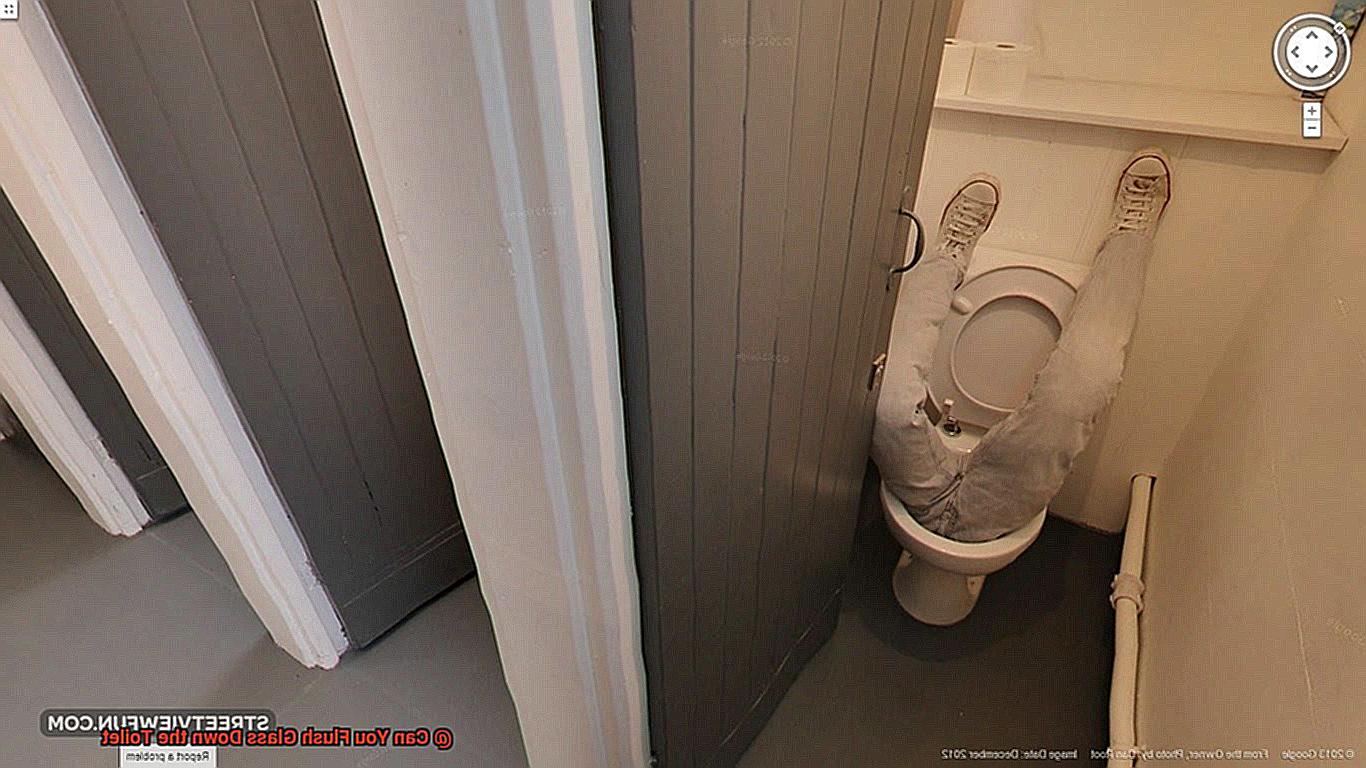
When it comes to handling broken glass, safety should be your top priority. Start by wearing gloves to protect your hands from cuts. Use a broom and dustpan or a piece of cardboard to carefully pick up the glass shards. Never use your bare hands as it can cause injury.
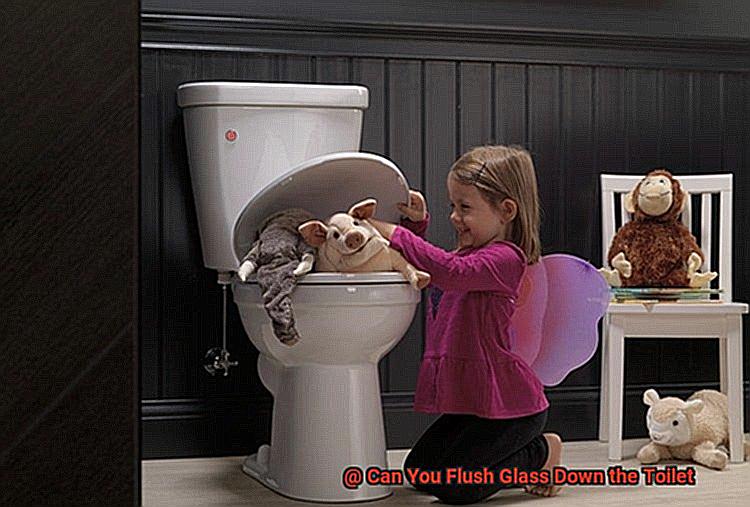
Proper Disposal
Once you have gathered all the broken pieces, place them in a sturdy container like a plastic bag or cardboard box. Label the container as “broken glass” and dispose of it in a proper trash bin. Avoid mixing broken glass with other trash or recyclables as it can harm sanitation workers and damage recycling equipment.
Recycling Programs
Check if your community offers recycling programs for glass. If they do, follow their guidelines for disposing of broken pieces. Some programs may require that you place broken glass in a separate container or take it to a designated drop-off location.
Small Pieces
For smaller pieces of glass, wrap them in newspaper or place them in a sealable plastic bag before disposing of them in the trash. Loose shards of glass should never be placed directly in the garbage as they can easily puncture through the bag and cause injury.
Professional Help
If you have larger pieces of glass that cannot fit in a container or are too dangerous to move, contact a professional for disposal. Local waste management services or junk removal companies can safely remove and dispose of large pieces of broken glass.
So, flushing broken glass down the toilet is never a safe or responsible option. Always handle and dispose of broken glass with care to avoid injury and environmental harm.
By following these simple steps, you can safely dispose of broken glass and protect your plumbing system, sanitation workers, and the environment from unnecessary harm.
Tips for Preventing Broken Glass in the Bathroom
Bathrooms can be a relaxing oasis, but when accidents happen, they can quickly turn into a dangerous place. One such hazard is broken glass. Not only can it cause injuries, but it can also lead to plumbing problems if flushed down the toilet.
To help you avoid these unpleasant scenarios, here are five easy tips to prevent broken glass in your bathroom.
Handle Glass Items with Care
The first step in preventing broken glass in the bathroom is to treat glass items with extra care. Avoid rough handling of glass bottles, jars, and other breakable items. Take your time and be cautious when using them. Accidents happen, but with a little extra care, you can significantly reduce the risk of breaking glass.
Use Slip-Resistant Bath Mats
Slipping in the shower or bathtub is not only scary, but it can also result in broken glass items. To prevent slips and falls, consider using slip-resistant bath mats. These mats provide a soft landing spot and reduce the risk of slipping.
Store Glass Items Safely
Avoid storing glass items on high shelves or other places where they could easily fall and break. If you must keep glass items in the bathroom, consider using a secure shelf or cabinet with doors that can be closed to keep them out of harm’s way.
Dispose of Glass Properly
If you do happen to break glass in the bathroom, it’s crucial to clean it up correctly to prevent injuries and damage to your plumbing system. Use a broom and dustpan to sweep up any large pieces of glass, then use a damp paper towel or cloth to wipe up any remaining shards. Be sure to dispose of the glass properly by using a sealed container rather than flushing it down the toilet.
Check for Damage
Regularly check for cracks or chips in bathroom mirrors or glass shower doors. If you notice any damage, replace the item as soon as possible to prevent it from shattering unexpectedly. It’s better to be safe than sorry.
WH3d9rLXAA4″ >
Conclusion
In conclusion, while it may seem like a quick fix to flush glass down the toilet, it’s important to consider the potential consequences.
Glass is not biodegradable and can wreak havoc on your plumbing system, causing expensive blockages and backups that require professional attention.
Let’s not forget about the environmental impact too – broken glass particles can contaminate water supplies and harm aquatic life if they end up in rivers or oceans. And don’t forget about safety concerns; broken glass is a hazard that can cause injury to anyone who comes into contact with it.
To avoid these issues, always handle broken glass with care and dispose of it properly in designated trash bins or recycling programs. Labeling your container as “broken glass” will help sanitation workers handle the material safely. Slip-resistant bath mats are also an excellent precautionary measure to prevent accidents in your bathroom.

